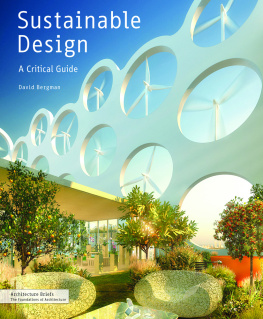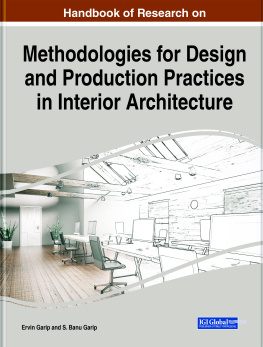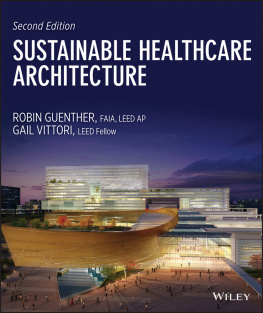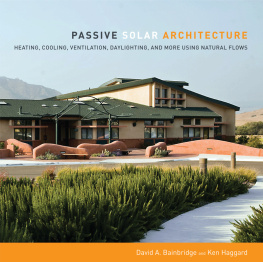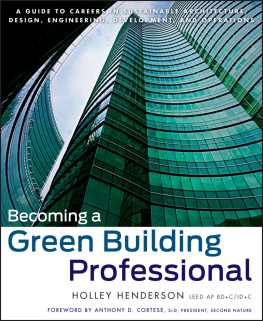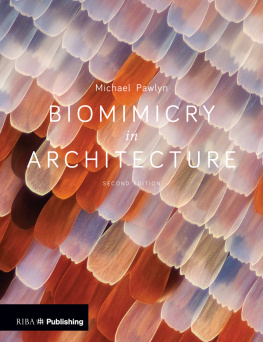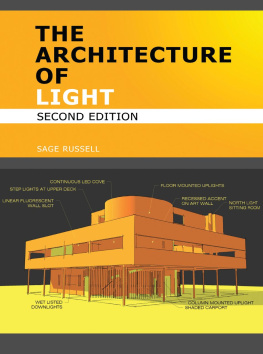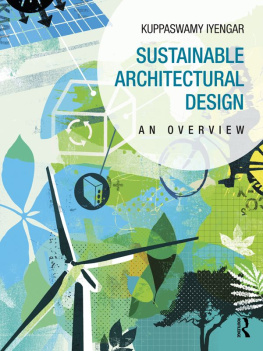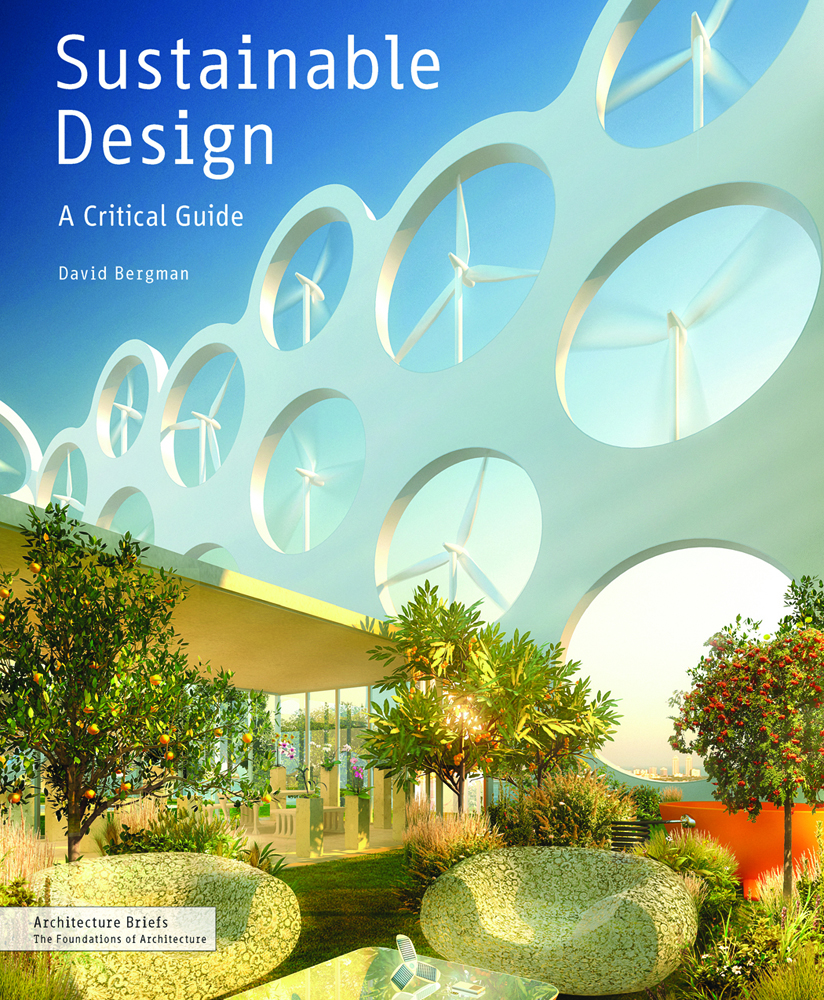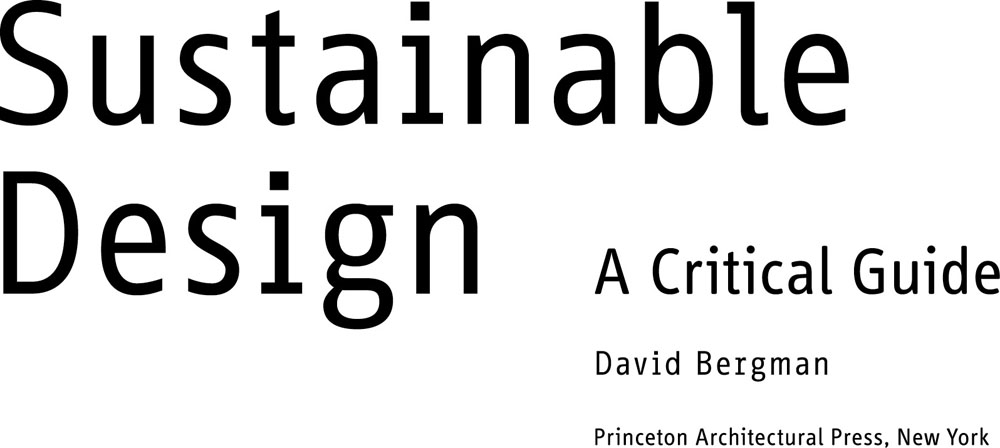Published by
Princeton Architectural Press
37 East Seventh Street
New York, New York 10003
Visit our website at www.papress.com.
2012 David Bergman
All rights reserved
15 14 13 12 4 3 2 1 First edition
No part of this book may be used or reproduced in any manner without written permission from the publisher, except in the context of reviews.
Every reasonable attempt has been made to identify owners of copyright. Errors or omissions will be corrected in subsequent editions.
Cover image: architect: Oppenheim Architecture + Design; rendering: Dbox
Editor: Laurie Manfra and Megan Carey
Designer: Jan Haux
Special thanks to: Bree Anne Apperley, Sara Bader, Nicholas Beatty, Nicola Bednarek Brower, Janet Behning, Fannie Bushin, Carina Cha, Russell Fernandez, Linda Lee, Diane Levinson, Jennifer Lippert, Gina Morrow, John Myers, Katharine Myers, Margaret Rogalski, Dan Simon, Sara Stemen, Andrew Stepanian, Paul Wagner, and Joseph Weston of Princeton Architectural Press Kevin C. Lippert, publisher
Library of Congress Cataloging-in-Publication Data
Bergman, David, 1956
Sustainable design : a critical guide. / David Bergman. 1st ed.
p. cm. (Architecture briefs series)
Includes bibliographical references.
ISBN 978-1-56898-941-9 (alk. paper)
ISBN 978-1-61689-206-7 (digital)
1. Sustainable design. 2. Sustainable architecture. I. Title. II. Title: Critical guide.
NK1520.B48 2011
720.47dc22
2011010528
The Architecture Briefs series takes on a variety of single topics of interest to architecture students and young professionals. Field-specific and technical information are presented in a user-friendly manner along with basic principles of design and construction. The series familiarizes readers with the concepts and technical terms necessary to successfully translate ideas into built form.
Also in this series:
Architects Draw
Sue Ferguson Gussow / 978-1-56898-740-8
Architectural Lighting: Designing with Light and Space
Herv Descottes and Cecilia E. Ramos / 978-1-56898-938-9
Architectural Photography the Digital Way
Gerry Kopelow / 978-1-56898-697-5
Building Envelopes: An Integrated Approach
Jenny Lovell / 978-1-56898-818-4
Digital Fabrications: Architectural and Material Techniques
Lisa Iwamoto / 978-1-56898-790-3
Ethics for Architects: 50 Dilemmas of Professional Practice
Thomas Fisher / 978-1-56898-946-4
Material Strategies: Innovative Applications in Architecture
Blaine Brownell / 978-1-56898-986-0
Model Making
Megan Werner / 978-1-56898-870-2
Old Buildings, New Designs: Architectural Transformations
Charles Bloszies / 978-1-61689-035-3
Philosophy for Architects
Branko Mitrovi c / 978-1-56898-994-5
Urban Composition: Developing Community through Design
Mark C. Childs / 978-1-61689-052-0
Writing about Architecture: Mastering the Language of Buildings and Cities
Alexandra Lange / 978-1-61689-053-7
Contents
Acknowledgments
Introduction
Acknowledgments
It would risk extreme hubris to start without acknowledging the vast body of preceding work by others, which Ive attempted to synthesize and organize into this brief. Often, it is by people I have never met but whose writings or designs I have admired, learned from, and perhaps incorporated here. These are the people who laid the groundwork for contemporary environmentalism and sustainable design, people who predate the bandwagon, from Thoreau and his fears of future technology to Bucky Fuller and his ardent visions of technological solutions, from the forebodings of Rachel Carson to the tentative optimism of Bill McKibben and the exuberant designs emerging worldwide.
Of course, there is also a long list of people I need to thank specifically. First must be Kevin Lippert, who approached me to write this book. Also at Princeton Architectural Press: Clare Jacobson, Laurie Manfra, Jennifer Lippert, and especially Jan Haux and Megan Carey.
Thank you to my extremely helpful and resourceful assistants, Jason Bailey and Michelle Carrieri. Michael Bogdanffy-Kreigh, David K. Sargert, and Chris Garvin provided much valued input for the early versions of the manuscript. I undoubtedly have left some names off the following list of those who directly or indirectly provided assistance and encouragement: Alan Abrams, Amelia Amon, Dan Blitzer, Wendy Brawer, Erika Doering, Josh Dorfman, Manny Feris, John Ferry, Paul Goldberger, Lori Ito Hardenbergh, Alice Hartley, Mitchell Joaquim, Ellen Dunham-Jones, Cathy Kaufman, Tim Vireo Keating, Wilder Knight, Alexis Kraft, Conor Lally, Chandler Lee, Nadav Malin, Anne Mandelbaum, Michael Mandelbaum, Paul S. Mankiewicz, Mark Osmun, Walter Pearce, Philip Proefrock, Jeremy Shannon, Lenny Stein, Susan Szenasy, Cameron Tonkinwise, and David White.
Teaching at Parsons The New School for Design and elsewhere has provided me with the continuing impetus to find coherent and succinct ways to explain concepts that are often complex and overlapping. For starting me on that path, I owe major gratitude to Tony Whitfield.
Id like to think I gleaned from my father, Jules Bergman, the importance of distilling those complex concepts into comprehensible bits of understanding that can be reassembled to better explain the whole. Among his television science reports, he coveredand made accessible to the nontechnical viewerearly environmental topics such as solar power, asbestos, and clear-cutting.
The influence of my mother, Joanne Bergman, ranged from providing me with every building toy known to 1960s western civilization to engaging me in early environmentalism. I recall being volunteered for activities like trudging through muddy local forests to survey the wetlands remaining between the pre-McMansion subdivisions. (Or did I volunteer her?) Only recently did I figure out that who I am is no accident.
And the proverbial last-but-certainly-not-least is my wife and CEE Lori Greenberg. Years ago, a magazine editor asked us what Loris position at my product design company was and I flippantly replied Chief of Everything Else. For this book, Lori was art director and primary shoulder. That doesnt begin to sum up what this book and I owe her.
Introduction
Lets clear the air (so to speak) right away. This is not a book about doom and gloom. We wont spend a lot of time talking about environmental crises. Many others have taken care of that, and whether or not you believe that climate change is the upcoming apocalypseits actually not the only environmental concern we facewe dont need to dwell on it. The rationales for ecodesign reach far beyond the singular goal of mitigating climate change to include setting the stage for the futurethe sustainingof our species and aspiring still further to a positive outcome: improving the quality of our lives.
Too often environmentalists take the view that we have been bad and must amend our ways, that sacrifice is the necessary path, that we have been irresponsible and we have to give up modern comforts to become more responsible. That approach is not going to work. Most of us have grown used to our ways, and it would be impossible to turn back the clock to how we lived before the Industrial Revolution. Doom-and-gloomists (who are more likely to call themselves realists) would say we have no choice: the dual problems of consumption and population cannot be overcome any other way. But sacrifice does not represent a desirable path or one that most of us would undertake voluntarily. Furthermore, getting rid of technology and modern comforts will not solve our problems. Take cars, for example. The back-to-our-roots approach, which some people consider environmentalism to be, would have us trade in cars for horses. But I doubt wed like manure-filled streets any more than we like greenhouse gases and traffic jams. The same is true for other areas of technology: reverting from electric or gas furnaces to wood-burning fireplaces on a widespread level is worse environmentally.

